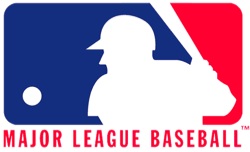 Tomorrow marks the 20th anniversary of the 1994 players’ strike, and since then MLB went from seriously bad times in 1995 to a huge spike in revenues, attendance and public awareness. Here’s how it happened.
Tomorrow marks the 20th anniversary of the 1994 players’ strike, and since then MLB went from seriously bad times in 1995 to a huge spike in revenues, attendance and public awareness. Here’s how it happened.
Irving Rein, Ben Shields and Adam Grossman lay out a pretty compelling timeline of how MLB owners regrouped after the 1994 strike that saw the cancellation of the World Series and part of spring training, a 232-day delay that ended in April 1995. Attendance was down that 1995 season by some 20 percent, and there certainly were some casualties (like the Montreal Expos, a team that never fully recovered from the work stoppage).
But as a whole, MLB impressively rebounded after making peace with players, expanding revenues by some 400 percent to an estimated $8 billion in 2013. It’s trendy to argue that an emphasis on stars led to MLB’s recovery — and there is some truth to the fact that the accomplishments of a Cal Ripken, Jr. did indeed help burnish MLB’s image — but the real reasons are a little more mundane: the explosion in media-rights sales, money machines disguised as new ballparks, and the development of MLBAM, which does an estimated $800 million in annual revenue. Bringing MLB to fans no matter where they are, whether through From Forbes:
Even while prioritizing the building and enhancing of its venues, MLB was also quick to recognize the importance of media rights deals. In particular, baseball teams were among the first organizations to either sign lucrative local television deals with regional sports networks (RSNs) or build their own networks to broadcast games. The Red Sox were one of the first teams to air its games on an RSN when the team broadcast most away games in 1984 on New England Sports Network, which is majority owned by the Red Sox. The New York Yankees took things to another level when it launched the Yankees Entertainment and Sports Network (YES) in 2002. More recently, the Los Angeles Dodgers signed an agreement with Time Warner Cable that will pay the team $8.35 billion over 25 years. The Los Angeles Angels, San Diego Padres and Texas Rangers all have secured RSN agreements worth at least $1 billion.
There is a question of whether RSNs can afford these agreements. For example, Time Warner has struggled to reach deals with cable and satellite providers to carry the channel with Dodgers games because of the significant increase in costs to customers. Comcast SportsNet Houston, 45% owned by the Houston Astros, filed for bankruptcy this year after failing to get widespread carriage pacts in Houston. However, MLB teams will likely continue to receive large sums of broadcast dollars because they can provide RSNs with a significant amount of new and live television content throughout the year.
Not every RSN has been a success: the Minnesota Twins notably failed early in the process with their own sports network. And as more Americans cut the cord, there will be more pressure for MLB to allow local broadcasts via the Internet (which is probably inevitable — a lawsuit addressing this very point is making its way through federal court), so the warning about the media income not being sustainable could very well turn out to be true. But that could also be good news for MLBAM, an opportunity to sell more season passes to MLB.tv.
—-
Share your news with the baseball community. Send it to us at editors@augustpublications.com.
Are you a subscriber to the weekly Ballpark Digest newsletter? You can sign up for a free subscription at the Newsletter Signup Page.
Join Ballpark Digest on Facebook and on Twitter!
Follow Ballpark Digest on Google + and add us to your circles!
